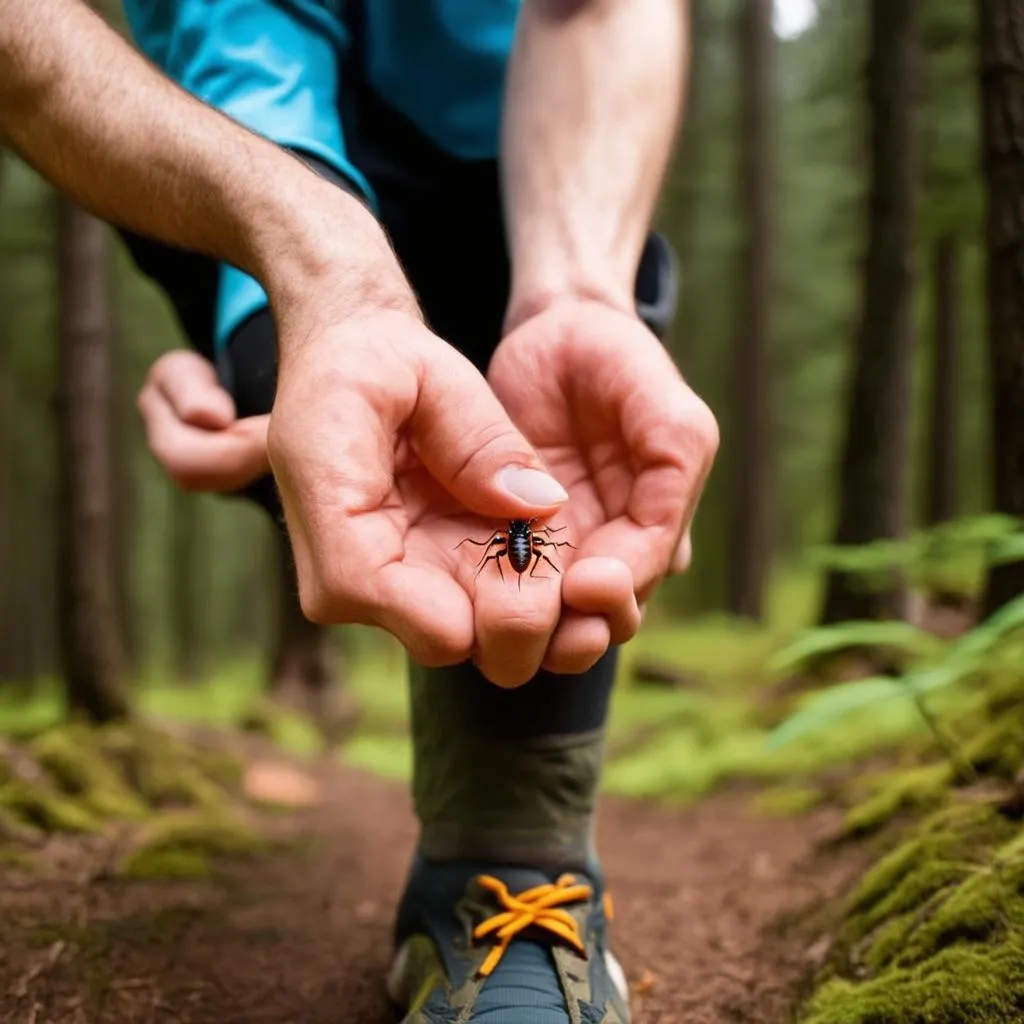Picture this: you’re trekking through the majestic Yosemite National Park, the sun dappling through the ancient redwoods. You pause, breathing in the crisp mountain air, and suddenly, you spot a tiny, dark speck on your arm. A tick! Now you’re left wondering, did it hitch a ride solo, or does it have company lurking nearby? It’s a question many travelers ask, especially those venturing into the great outdoors. So, Do Ticks Travel Together? Let’s dive in and find out.
Tick Travel: Lone Wolves or Pack Mentality?
Contrary to popular belief, ticks aren’t social butterflies. They’re more like lone wolves of the arachnid world. While you might find multiple ticks on yourself or your furry travel companion, it’s usually not because they traveled together. Here’s why:
Ticks are Ambush Predators
Instead of actively seeking out their next meal in a pack, ticks prefer a more passive approach. They lie in wait, clinging to blades of grass or shrubs, using a technique called “questing”. When a suitable host, like you or your dog, brushes past, they latch on, ready for their blood meal.
Tick Life Cycle: Spreading Out for Survival
A tick’s life cycle also explains their solitary nature. After hatching from eggs laid in the environment (often hundreds or even thousands at a time!), the tiny larvae need to find their own individual hosts to feed and molt. They aren’t concerned with sticking together. This pattern of independent feeding and development continues through their nymph and adult stages.
Environmental Factors: Congregation, Not Collaboration
So, if ticks aren’t traveling in groups, why do we sometimes find them clustered together? The answer lies in environmental factors.
- Habitat Preference: Ticks thrive in warm, humid environments with plenty of vegetation. If one area offers ideal conditions, you’re likely to find a higher concentration of ticks, even though they aren’t intentionally grouping up.
- Host Movement: Animals, including humans, can unknowingly transport ticks to new areas. Imagine a deer passing through a patch of tall grass infested with ticks. It could pick up several, inadvertently carrying them to a new location.
Traveling Safely in Tick Territory: Tips for Protection
Whether ticks travel together or not, one thing remains true: prevention is key.
Planning Your Trip:
- Research Your Destination: Before you embark on your next adventure, especially if you’re headed to areas known for tick activity, familiarize yourself with the local tick species and the diseases they might carry. Websites like travelcar.edu.vn can be invaluable resources for gathering this information.
- Pack Smart: Include tick repellent containing DEET or picaridin in your travel essentials. Light-colored clothing can make it easier to spot ticks, and tucking your pants into your socks can create a barrier.
During Your Trip:
- Stay on Trail: When hiking, stick to designated paths to minimize contact with tall grass and brush, prime tick habitats.
- Check Regularly: Perform thorough tick checks on yourself, your children, and your pets after spending time outdoors. Pay close attention to areas like the scalp, behind the ears, underarms, and groin.
- Shower After Outdoor Activities: Showering soon after being outside can help wash away any unattached ticks.
 Checking for ticks
Checking for ticks
Common Tick-Related Travel Questions:
What are the signs of a tick bite?
Not all tick bites cause noticeable symptoms. However, some common signs include a red spot or rash at the bite site, flu-like symptoms (fever, chills, headache, muscle aches), and in some cases, a bullseye-shaped rash that can indicate Lyme disease.
What should I do if I find a tick on me?
Remove it promptly and safely using fine-tipped tweezers. Grasp the tick as close to the skin’s surface as possible and pull upward with steady, even pressure. Avoid twisting or jerking the tick, as this can break off its mouthparts and increase the risk of infection.
When should I see a doctor?
If you develop any unusual symptoms after a tick bite, especially a rash or fever, consult a healthcare professional immediately. Early diagnosis and treatment of tick-borne illnesses are crucial for preventing long-term complications.
Tick Travel and Feng Shui
While ticks might not be the most welcome travel companions, their connection to nature offers a subtle link to the principles of Feng Shui. The emphasis on maintaining a harmonious balance with our surroundings resonates strongly with tick bite prevention. By respecting the natural world and taking steps to protect ourselves, we can enjoy our outdoor adventures while minimizing risks.
 Safe hiking trails
Safe hiking trails
Exploring the World, Safely and Mindfully
Remember, knowledge is power when it comes to tick safety. By understanding their behavior and taking preventative measures, you can confidently explore the world around you. If you’re looking for more travel tips and advice, be sure to visit travelcar.edu.vn for a wealth of information to enhance your journeys.
What are your go-to tick prevention strategies? Share your experiences and tips in the comments below!